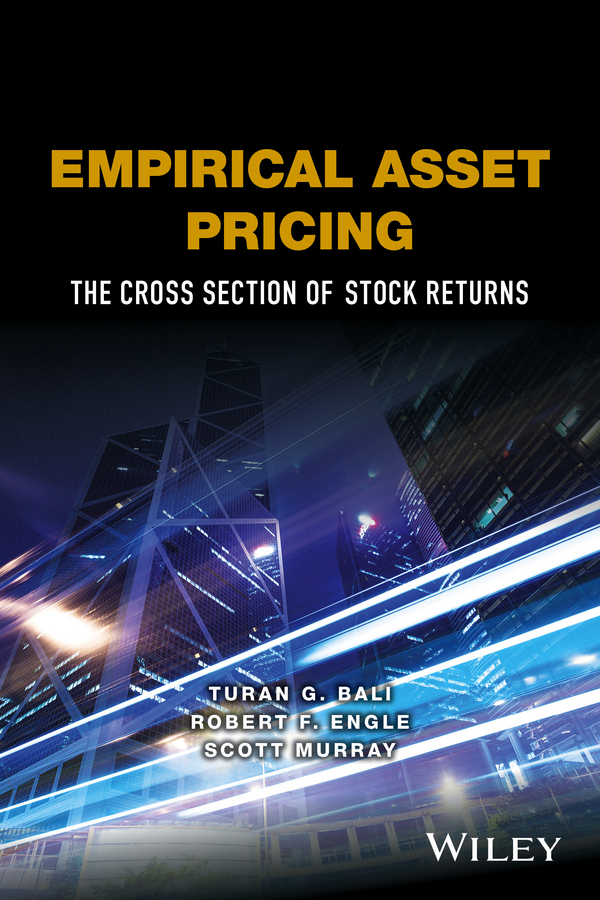Empirical Asset Pricing by Bali Turan G.; Engle Robert F.; Murray Scott & Robert F. Engle & Scott Murray

Author:Bali, Turan G.; Engle, Robert F.; Murray, Scott & Robert F. Engle & Scott Murray
Language: eng
Format: epub
Publisher: Wiley
Published: 2016-03-21T00:00:00+00:00
Can Momentum Explain Other Relations
Having found no evidence in our bivariate portfolio analyses that relations between expected returns and beta, market capitalization, or book-to-market ratio can explain the momentum effect, we now use bivariate portfolio analysis to examine whether the momentum effect can explain the negative alpha of portfolios consisting of long positions in high-beta stocks and short positions in low-beta stocks, the size effect, or the value premium.
We begin this investigation by using bivariate dependent-sort portfolio analysis to control for the effect of momentum by using as the first sort variable. We then examine the relations between future returns and each of , , and within each quintile of . The parameters of the portfolio analyses are the same as in the previous dependent-sort analyses. The only difference is that here, the first sort variable is , and the second sort variable, which is the variable whose relation with expected returns is the focus of the analysis, is either , , or . For the analyses the use as the second sort variable, and thus examine the relation between and future stock returns after controlling for , when subjecting the returns of the 5-1 portfolios to the FF risk model, we exclude the size factor () because inclusion of the size factor would amount to examining the size effect after controlling for the size effect. Similarly, the FF alphas of the difference portfolios are calculated relative to a factor model that excludes the value factor ().
The results of these portfolio analyses are presented in Table 11.9. When controlling for , the value-weighted 5-1 portfolios within each quintile generate negative but statistically insignificant average returns. The CAPM alphas of each of these portfolios, however, are negative, economically large, and statistically significant. For the average quintile, the 5-1 portfolio generates CAPM alpha of −0.57% per month with a corresponding t-statistic of −3.33. When the FF risk model is used to adjust the returns, the negative alpha of the 5-1 portfolio is significant only in quintiles two and three of , and marginally significant in quintile four. However, for the average quintile, the difference portfolio generates statistically significant negative FF alpha of −0.35% per month (t-statistic = −2.08). The equal-weighted portfolios produce even stronger empirical evidence of a negative relation between and future stock returns since, with the exception of the average returns of the 5-1 portfolio in quintiles three through five of , all average returns and alphas are negative and highly statistically significant when equal-weighted portfolios are used. Most importantly, the average returns and alphas of the 5-1 portfolio for the average quintile are all negative, economically large, and highly statistically significant. The analysis therefore fails to find any evidence that controlling for explains the negative abnormal returns of portfolios that are long high- stocks and short low- stocks.
Table 11.9 Bivariate Dependent-Sort Portfolio Analysis—Control for This table presents the results of bivariate independent-sort portfolio analyses of the relation between future stock returns and each of , , and (second sort variables) after controlling for the effect of .
Download
This site does not store any files on its server. We only index and link to content provided by other sites. Please contact the content providers to delete copyright contents if any and email us, we'll remove relevant links or contents immediately.
The Black Swan by Nassim Nicholas Taleb(6762)
Bad Blood by John Carreyrou(6274)
Pioneering Portfolio Management by David F. Swensen(6078)
Millionaire: The Philanderer, Gambler, and Duelist Who Invented Modern Finance by Janet Gleeson(4093)
Skin in the Game by Nassim Nicholas Taleb(3965)
The Money Culture by Michael Lewis(3846)
Bullshit Jobs by David Graeber(3828)
Skin in the Game: Hidden Asymmetries in Daily Life by Nassim Nicholas Taleb(3720)
The Wisdom of Finance by Mihir Desai(3523)
Blockchain Basics by Daniel Drescher(3329)
Liar's Poker by Michael Lewis(3220)
The Intelligent Investor by Benjamin Graham Jason Zweig(2930)
Hands-On Machine Learning for Algorithmic Trading by Stefan Jansen(2925)
Mastering Bitcoin: Programming the Open Blockchain by Andreas M. Antonopoulos(2891)
Fooled by Randomness: The Hidden Role of Chance in Life and in the Markets by Nassim Nicholas Taleb(2860)
Investing For Dummies by Eric Tyson(2793)
The Power of Broke by Daymond John(2771)
Market Wizards by Jack D. Schwager(2538)
Zero Hour by Harry S. Dent Jr. & Andrew Pancholi(2531)
